Politics
The Modi Legacy No One Is Talking About: He Is Following In Footsteps Of Ahilyabai Holkar By Revamping Hindu Holy Sites
Arihant Pawariya
Oct 09, 2020, 04:43 PM | Updated 06:35 PM IST
Save & read from anywhere!
Bookmark stories for easy access on any device or the Swarajya app.
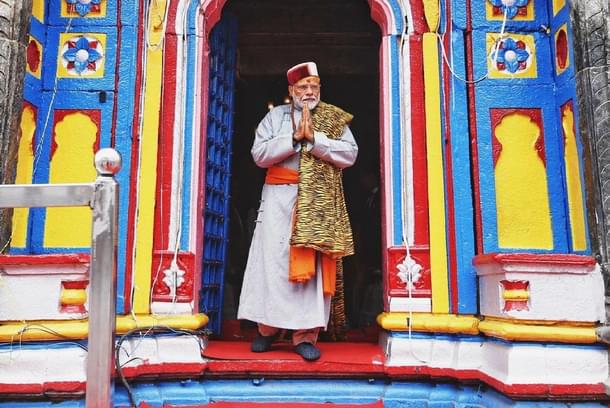
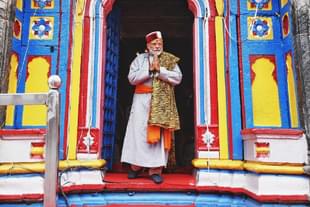
On 7 October (Wednesday), Prime Minister Narendra Modi completed 19 years in office as head of a government, more than 12 years of which he served as chief minister of Gujarat. While a lot of ink has been spilled on the various achievements of the governments he led, both in Gujarat and at the Centre, there is one aspect of his legacy that no one is talking about.
PM Modi is silently following in the footsteps of Devi Ahilyabai Holkar, the illustrious 18th century Hindu queen of Malwa, not least because both rose from a poor and humble background to the highest of positions.
Holkar was born in a shepherd family in the Dhangar community which is currently in Maharashtra’s list of Vimukta Jati and Nomadic Tribes. Likewise, Modi hails from the Modh-Ghanci-Teli (oil pressers) caste which is listen in the Other Backward Classes list of the Centre.
One can also find similarities in administrative qualities and focus of both the leaders but the concern of this piece is different. It is to highlight how Narendra Modi is renovating and rebuilding Hindu holy sites on a national scale last seen under Devi Ahilyabai Holkar.
“The most significant contribution of Ahilyabai, however, comes in the preservation, reconstruction and refurbishment of a host of Hindu sites which she carried out during her 30-year rule. From Gangotri to Rameshwaram, and from Dwarka to Gaya, she spent money on rebuilding temples destroyed under the Mughal rule, in restoring the past glory of holy sites, in building new temples and in building ghats for easy access to almost all major rivers in the Bharatvarsha,” Aashish Chandorkar wrote in Swarajya last year on her 224th birth anniversary.
Chandorkar rightly says that “no other individual in the modern era has worked towards the renovation and overhauling of Hindu holy sites as Ahilyabai. If, in the current day, Hindus can visit and appreciate the centres so integral to the ancient history and evolution of the dharma, a significant part of the credit goes to her.”
Rani Holkar built the present Kashi Vishwanath Temple in Varanasi. The original temple structure was destroyed in 1669 by Aurangzeb who built Gyanvapi mosque over the site. The most famous ghats of Varanasi, Dashashwamedh where Ganga Aarti is conducted and Manikarnika where cremations are performed, were also revamped by the Malwa queen. Even Sarayu ghat in Ayodhya was refurbished by her.
She also contributed greatly to rebuilding of the Somnath temple in 1783, which was slightly further from the site of original temple which saw destruction by Islamic invaders multiple times over centuries. This original site was reclaimed post independence and this is where the present grand temple stands.
The list goes on.
From building the Vishnupad Temple in Gaya, Ramachandra temple in Puri, Hanuman temple in Rameshwaram, Shri Vaidyanath temple in Parli Vaijnath to facilities at Kedarnath, Srisailam, Omkareshwar, Ujjain To refurbishing ghats to dharmashalas in temple towns, her contribution to Dharma is so enormous that reams can be written on it.
Though no one can match what Holkar achieved in this regard, it would not be wrong to say that Modi is the first Hindu leader after her to take up rebuilding and renovation of Hindu holy sites on such a scale.
Under Modi’s government, construction of a grand Ram Temple in Ayodhya has started, foundation stone for which was laid in August this year after a bhumi poojan ceremony where was present as the yajmaan.
Modi’s detractors might not want to credit him for the unanimous Supreme Court judgement that made it all possible but it would be naive to believe that the same verdict would’ve come under a different government led by a different person.
One has to acknowledge the contribution of all the Ram bhaktas - from lakhs of karsevaks to Hindutva leaders of the 1990s who led the movement all the way up to Modi.
Narendra Modi is also revamping the Kashi Vishwanath Mandir premises like never before.
He laid the foundation stone for the Vishwadham Project last year and the corridor, which will extend from the temple to the Ganga river, is slated to be completed next year. This is how the holy place looked before the development work started.
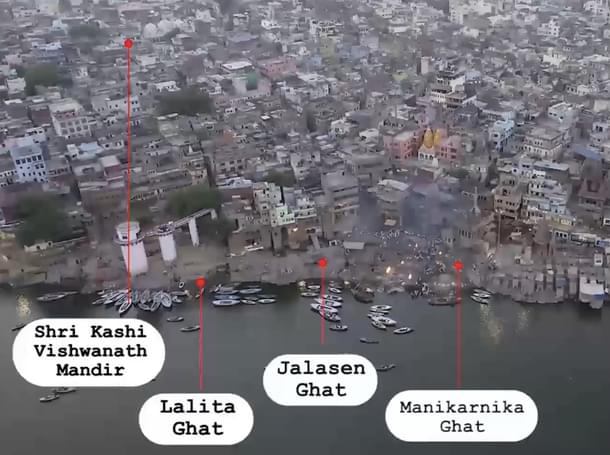
This is how the temple premises will look like once the project gets completed:
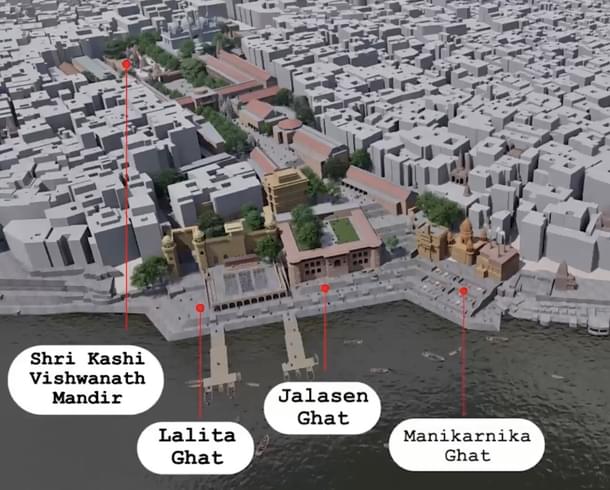
Apart from the corridor, the government has carried out lot of renovation works at scores of ghats in Varanasi.
This author had covered this in detail in 2018 after visiting the city. The 16 sq.km area which forms the heart of the city has also witnessed a lot of development leading to its facelift.
The Modi government is also undertaking the redevelopment of Kedarnath Dham which saw widespread destruction in the 2013 floods.
It was in 2017 that PM Modi had laid the foundation stone for five major reconstruction projects at the hill shrine.
Since pictures speak a thousand words, it’s better to illustrate the ongoing overhaul of the area with the help of images. This is how the Kedarnath temple area looked like before the project started.
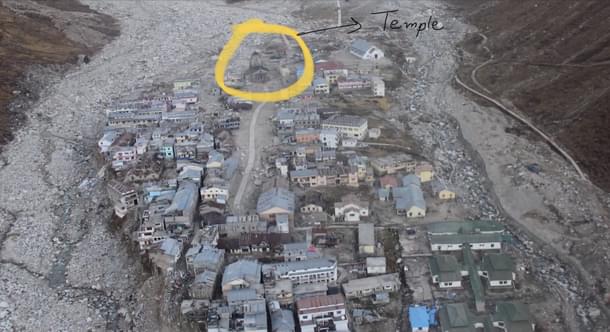
This is how the revamped area will look like once all construction work gets over.
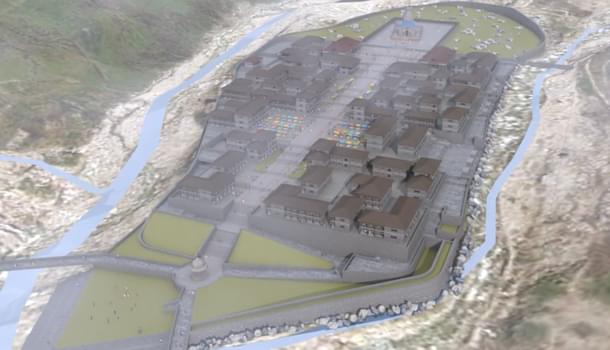
The iconic Somnath temple, symbol of Dharma and resistance, is also one of the sites that is currently under redevelopment by the Central government. The temple premises are up for a major overhaul.
As per InDesign Studio, the proposed projects aim to provide “enhanced access and connectivity; redevelopment of temple precinct; capitalising upon the existing heritage potential in Somnath“ among other things.
Currently, the surroundings of the temple are messy with buildings coming up here and there. People can’t see the temple shikhara from afar. The aesthetics of the region are not worthy of the great pilgrimage site that it is.
This is how the temple and its neighbourhood looks like at present:
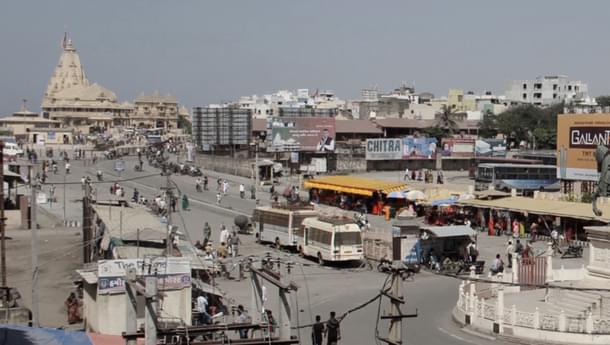
This is how the master plan envisages the temple town once it’s revamped:
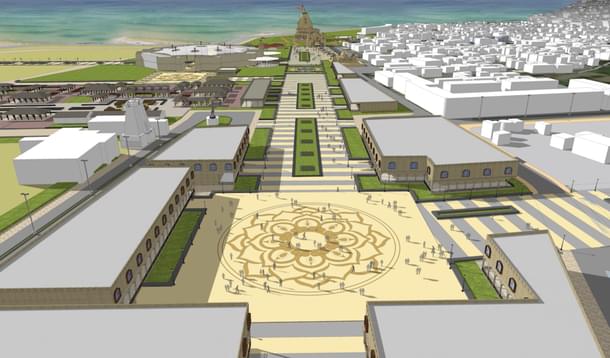
As Chief Minister of Gujarat, Modi had executed the work of developing the Sabarmati riverfront which has become a major spot to hang out for the people of Ahmedabad.
In coming years, on the lines of aforementioned works, the government will also undertake major redevelopment projects in Dholavira, Khajuraho, Hampi, and Mahabalipuram, which are some of the most important places for Hindu culture and civilisation.
The Badrinath temple area is also being redeveloped. Apart from this, the government is also constructing the Char Dham road network which will be all-weather national highways connecting the four pilgrimage sites of Yamunotri, Gangotri, Kedarnath and Badrinath.
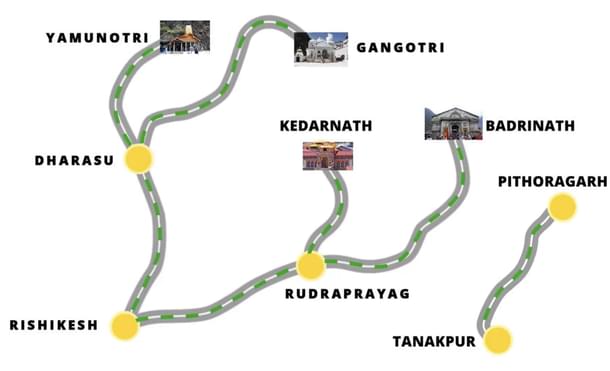
Of course, the Modi government is also carrying out civic infrastructure projects on a national scale - building a new parliament, new central vista, new residence for the Prime Minister and Vice President, while hundreds of railway stations are being revamped and so on. But it’s the government’s focus on overhauling Hindu holy sites that receives little to no attention.
Narendra Modi may not surpass Devi Ahilyabai Holkar in the number of reconstruction works for temples and pilgrimage sites, given the constraints he has to work with as against the liberty that comes with being a queen. But when he is done, he will certainly be counted as the person who did the most for Hindu holy sites after her.
Arihant Pawariya is Senior Editor, Swarajya.





